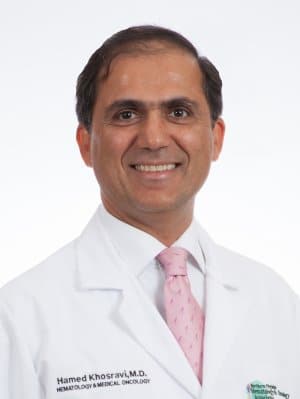
Hematology & Medical Oncology
2079 Daniel Stuart Square
Woodbridge, VA 22191

More Cancer Awareness Articles
It's Breast Cancer Awareness Month Are You As Aware As You Could Be?
Breast cancer is the most common malignant cancer, and one of the leading causes of death in women. In 2014, approximately 250,000 American women will be diagnosed with breast cancer, and approximately 40,000 will die from this disease.
The chances of getting breast cancer increases the older you get. Death resulting from breast cancer has decreased over the last decade mainly due to the impact of screening mammography, which permits diagnosis at an earlier stage of disease.
About five to six percent of all breast cancers are associated with genetic mutations like BRCA1 and BRCA2 for which testing is available. Women who test positive for BRCA1 or BRCA2 mutations are at increased risk for both breast and ovarian cancer.
These women should be referred for appropriate counseling to consider options for reducing risk and intensified surveillance which includes combination of annual mammography and breast MRI.
Although the majority of breast cancers are diagnosed as a result of an abnormal mammogram, not all mammographic findings represent cancer, and the majority of mammographic findings represent benign tissue.
Guidelines vary, but most physicians recommend mammogram screening for women age 40 to70 every one to two years.
No age at which it is safe to discontinue screening mammogram is stated, but most professionals recommend receiving screenings up to age 74,or perhaps longer if woman has a life expectancy of at least ten more years.
3D mammogram (tomosysthesis) is another technology that allows radiologists to see cancer more easily and sooner, and it also helps avoid follow up imaging, biopsies, and call back appointments.
3D mammography is also useful for detecting cancer in women at high risk of developing breast cancer including those with dense breast tissue and/or a family history of
breast cancer.
When a woman experiences symptoms such as lumps, nipple discharge, or an abnormal screening mammogram, a diagnostic mammogram can take more pictures of the problem area, and magnify it so that your doctors can make a more thorough evaluation and start a treatment plan and/or targeted ultrasonography to determine the need for tissue sampling or biopsy.
Once the diagnosis of cancer is made, care needs to be coordinated among clinicians in several specialties including breast and reconstructive surgeons, and radiation and medical oncologists.
After surgery, patients might need additional treatments like radiation therapy or systemic therapy such as chemotherapy or hormonal therapy in the form of pills.
A medical oncologist as part of multi- disciplinary team can evaluate and determine the need for such treatments.
Other Articles You May Find of Interest...
- Fighting Cancer for All: Why Diversity in Clinical Trials Matters
- Bill Johnson’s Lung Cancer Crusade: Fighting for a Radon-Free Life
- The Revolution of Robotic Surgery In Colorectal Procedures: Smaller Incisions, Faster Recovery
- Ovarian Cancer Prevention
- Wellness Technology From Nature, Light And Frequency
- Cancer: Improving the Odds
- Screening Tests For Oral Cancer

















